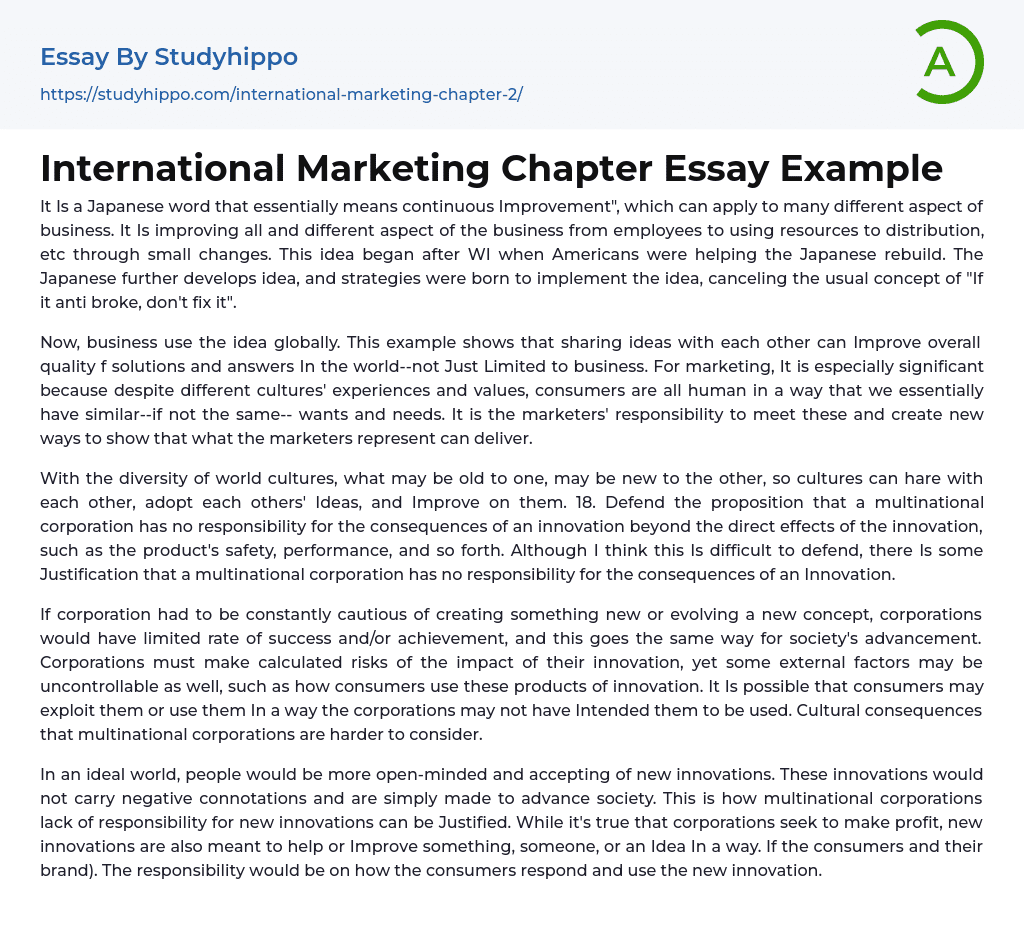The term "Continuous improvement" originates from Japan and refers to making small changes in various aspects of business, such as employees, resource utilization, and distribution. This concept gained traction after World War II when Japan was rebuilt with American assistance. The Japanese further developed this idea by creating strategies to implement it, challenging the traditional belief that things should not be fixed if they are not broken. Today, businesses worldwide embrace this concept by sharing ideas and striving for more than just limited improvements in their solutions.
In marketing, continuous improvement is particularly important as consumers from different cultural backgrounds share similar desires and needs. It is the responsibility of marketers to meet these needs and discover innovative ways to showcase how their products can deliver desired results. With diverse cultures around the world, what may be considered old in on
...e culture could be seen as new in another culture. As a result, cultures can exchange ideas, adopt each other's concepts, and mutually enhance them.
Some argue that multinational corporations should only bear responsibility for the immediate consequences of their innovations related to product safety and performance.
If corporations constantly had to be concerned about potential negative outcomes resulting from their innovations, it could impede their success and societal progress. However, despite the need for corporations to take calculated risks with their innovations, they often have limited control over how consumers utilize their products. This can lead to consumers exploiting or employing innovations in unintended ways, which presents challenges for corporations in predicting all cultural repercussions. Ideally, society should embrace new innovations that aim to advance without negative implications. Consequently, multinational corporations are not hel
accountable for the consequences of their novel developments; rather, it is ultimately the consumers' response and usage of the innovation in relation to the corporation's brand that assumes responsibility.
- Advertising essays
- Audience Theory essays
- Competitor Analysis essays
- Consumer essays
- Marketing Management essays
- Marketing Mix essays
- Marketing Plan essays
- Marketing Research essays
- Marketing Strategy essays
- Point Of Sale essays
- Price essays
- Procurement essays
- Product essays
- Product Differentiation essays
- Promotion essays
- Promotion And Marketing Communications essays
- Retailing essays
- Trademark essays
- Anheuser-busch essays
- Brands essays
- Detergent essays
- Product Placement essays
- Research Design essays
- New Product Development essays
- Advertisement essays
- Brand essays
- Sales Promotion essays
- Advertising campaign essays
- Consumer behaviour essays
- Offer And Acceptance essays
- Wal-Mart essays
- Discover essays
- Automobile essays
- Bus essays
- Civil engineering essays
- Cycling essays
- Electric Car essays
- Genetic Engineering essays
- Hybrid essays
- Innovation essays
- Internal Combustion Engine essays
- Invention essays
- Mechanical Engineering essays
- Mechanics essays
- Software Engineering essays
- Telephone essays
- Accounting essays
- Andrew Carnegie essays
- Automation essays
- Business Cycle essays




